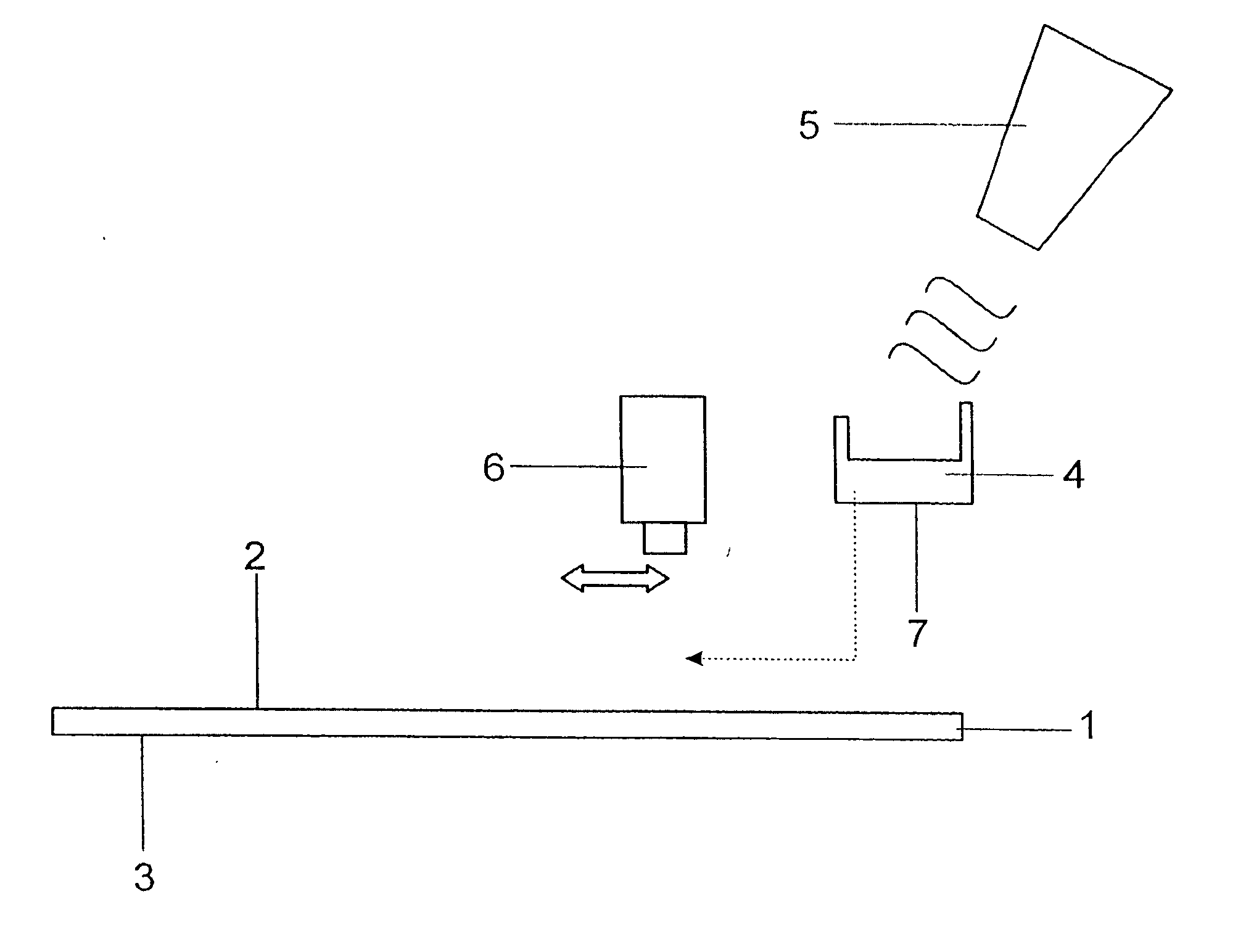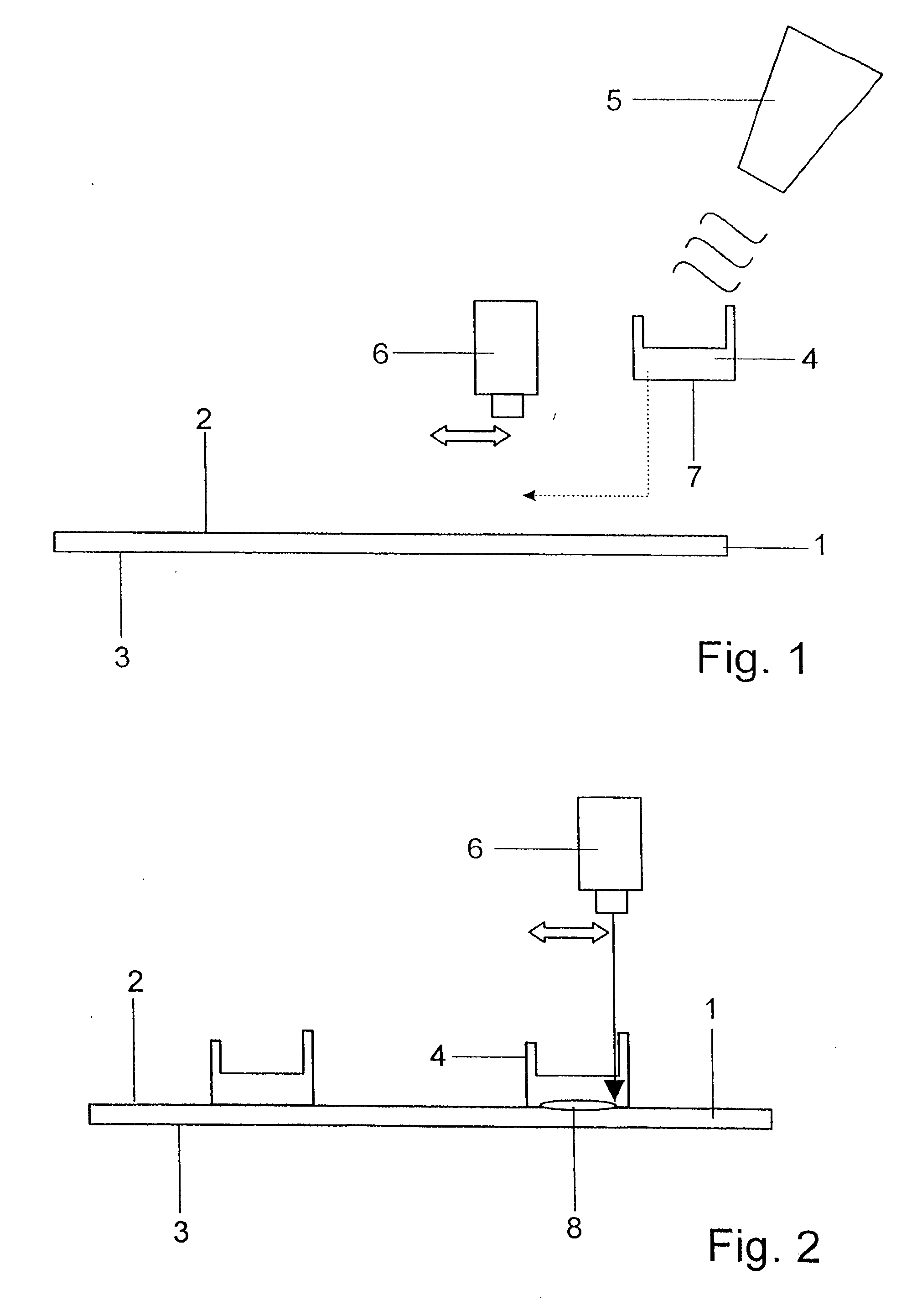Method for joining plastic structural component parts by means of laser radiation
a technology of laser radiation and structural components, applied in the direction of mechanical working/deformation, application, lamination, etc., can solve the problems of ever increasing occurrence of problems in joining and impaired surface quality on the side, and achieve the effect of preventing impairment of surface quality
- Summary
- Abstract
- Description
- Claims
- Application Information
AI Technical Summary
Benefits of technology
Problems solved by technology
Method used
Image
Examples
Embodiment Construction
[0020] One of the plastic structural component parts shown in FIG. 1 is a thin-walled injection-molded part 1 having a quality surface 3 opposite from a joint surface 2 and is fabricated from a polymer material which absorbs a laser beam used in the transmission method of laser welding. The other plastic structural component part 4 which is preferably made from the same polymer as the injection-molded part 1 is heated to a temperature of about 50° C. below its melting point by means of a heat radiator 5 and is then placed in the position required for joining with the injection molded part 1.
[0021] The two plastic structural component parts 1 and 4 are fixed relative to one another by a mechanical holding device, not shown, and are welded together accompanied by the action of laser radiation from a laser radiation source 6 which can be constructed, e.g., as a high-power diode laser. The dimension of the gap between the joint surface 2 and a joint surface 7 of the plastic structural ...
PUM
| Property | Measurement | Unit |
|---|---|---|
| wavelength range | aaaaa | aaaaa |
| thickness | aaaaa | aaaaa |
| thickness | aaaaa | aaaaa |
Abstract
Description
Claims
Application Information
 Login to View More
Login to View More - R&D
- Intellectual Property
- Life Sciences
- Materials
- Tech Scout
- Unparalleled Data Quality
- Higher Quality Content
- 60% Fewer Hallucinations
Browse by: Latest US Patents, China's latest patents, Technical Efficacy Thesaurus, Application Domain, Technology Topic, Popular Technical Reports.
© 2025 PatSnap. All rights reserved.Legal|Privacy policy|Modern Slavery Act Transparency Statement|Sitemap|About US| Contact US: help@patsnap.com


